This autumn I’ve been visiting the Rattray Marsh frequently. I have been adding common living things to the life list for the marsh on iNaturalist since most people only report rarities. It gives me a purpose to look more closely at the dandelions and goldenrods, bushes and shrubs, insects and insectivores. On one crisp day in November, I spied some brown furry animals swimming in Sheridan Creek near where it broadens out into a lagoon. Although they were quickly collecting leaves and sticks and bringing them back to where a fallen tree had partially dammed the creek, they were not American Beavers.
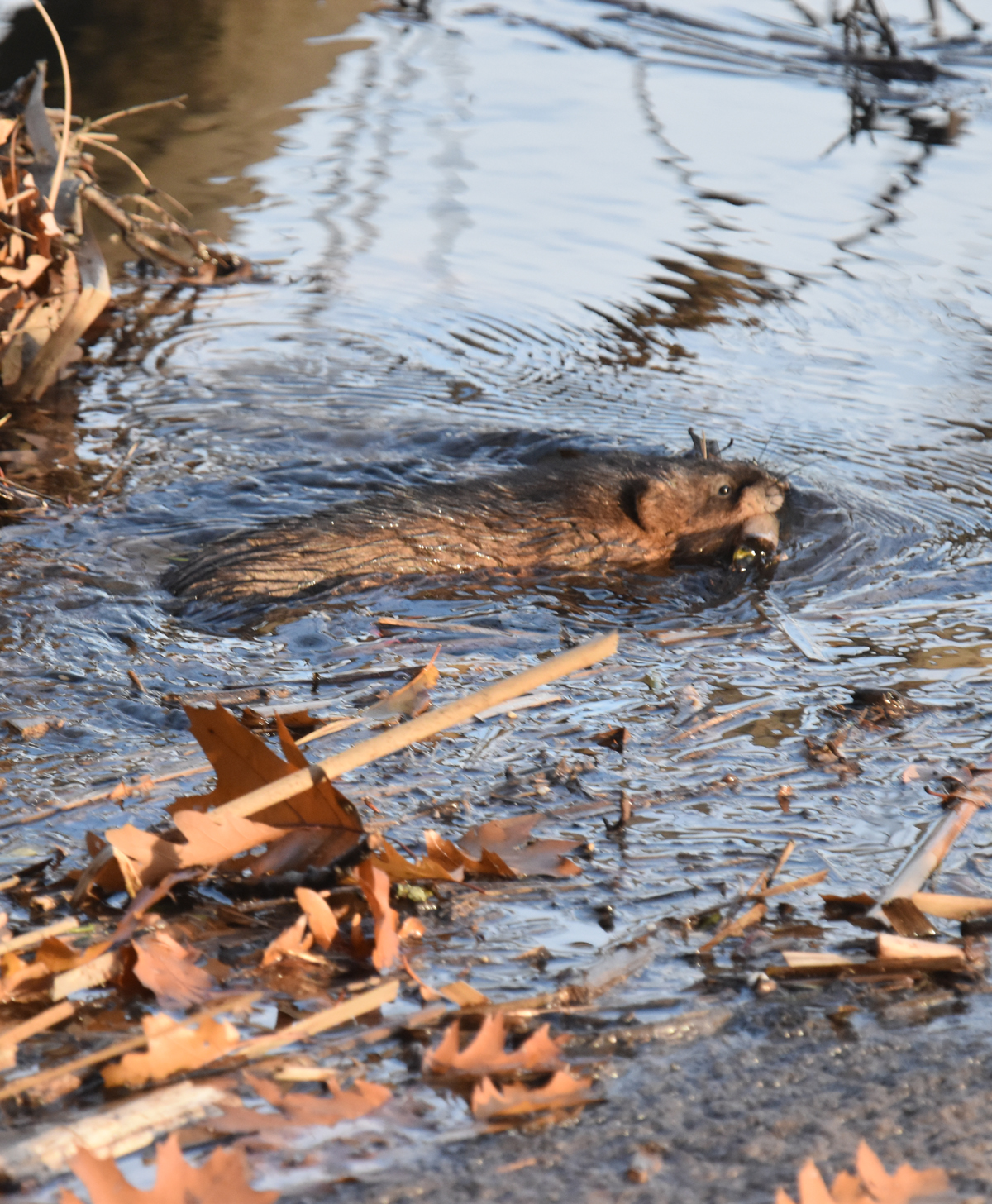
Why Were These Muskrats Working So Hard Carrying Leaves and Mud?
I’ve seen young Muskrats in the creek here before: those ones, though, were chowing down on some of the cattails. The two I watched today weren’t eating though. They were collecting leaf debris with some mud and twigs and swimming it over to where a tangle of branches from a fallen tree joined the edge of the creek bed
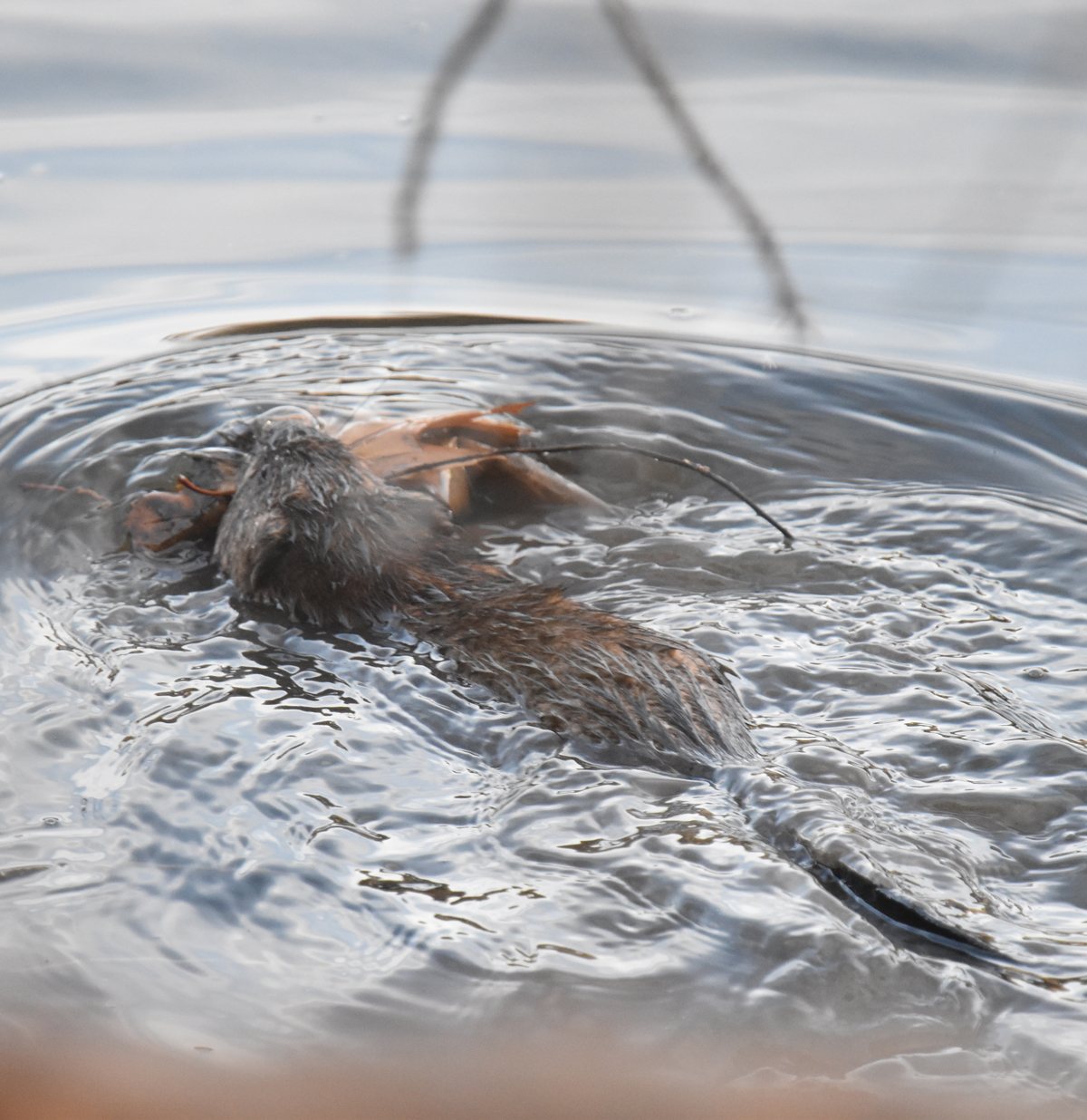
At first glance, I thought they might be beavers. The creek was running quickly enough that day that it might have sounded worth damming to a passing young beaver. But a quick look at the tails of these furry brown water mammals showed they were actually Muskrats
Why, Then, Were the Muskrats Carrying Dead Leaves Around?
As I mentioned a couple of years ago, Muskrats don’t hibernate. They need to move around all winter finding food to eat. To keep safe from predators like coyotes, they prefer to eat inside lodges or push-ups.
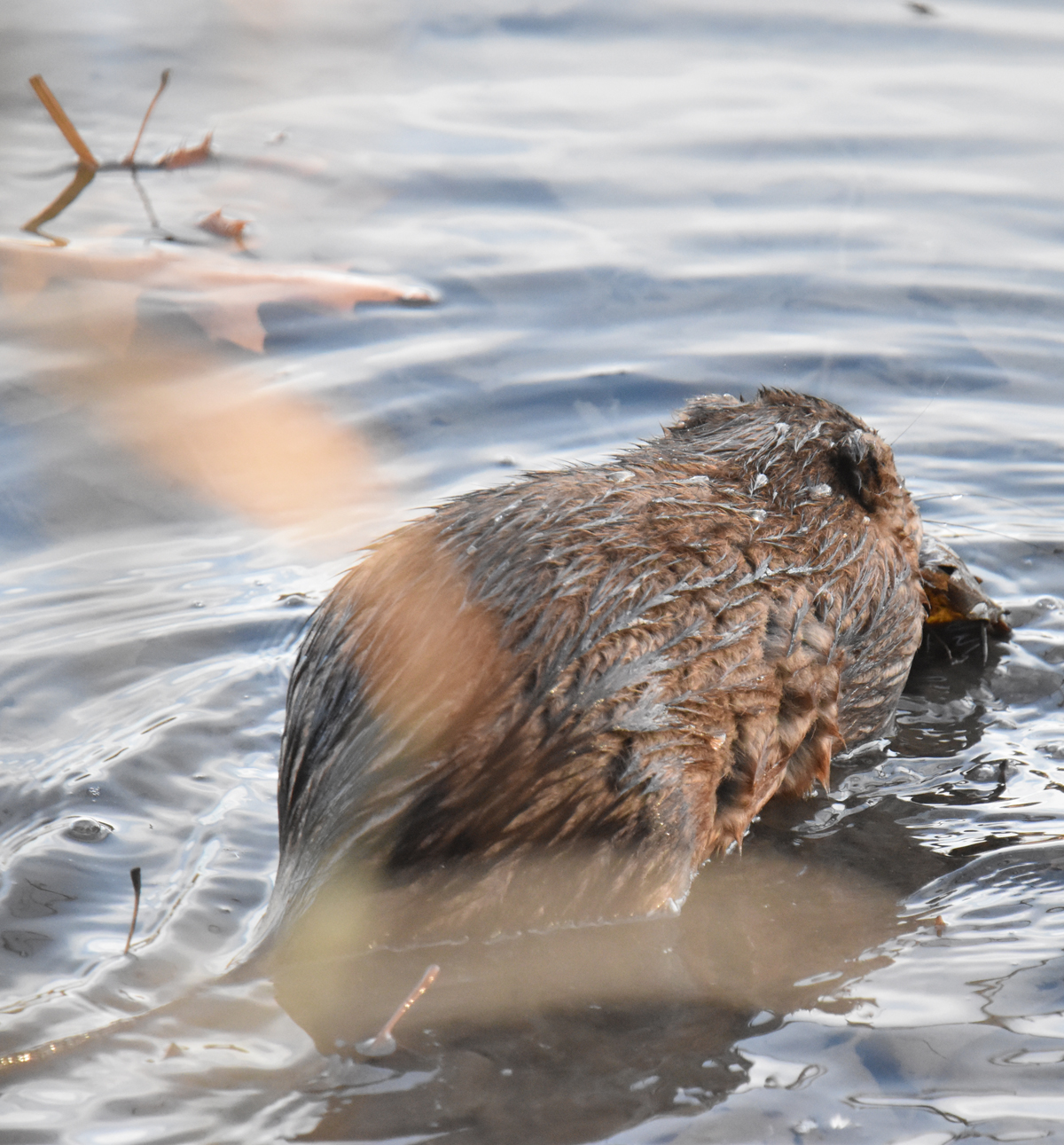
Lodges are piles of mud, leaves and debris with an underwater tunnel leading inside into an empty bit in the middle.

Another type of refuge is called a “push-up.” These are typically mounds of vegetation on top of the ice. They also have an empty resting or feeding place in the middle which is reached from a hole in the ice below.
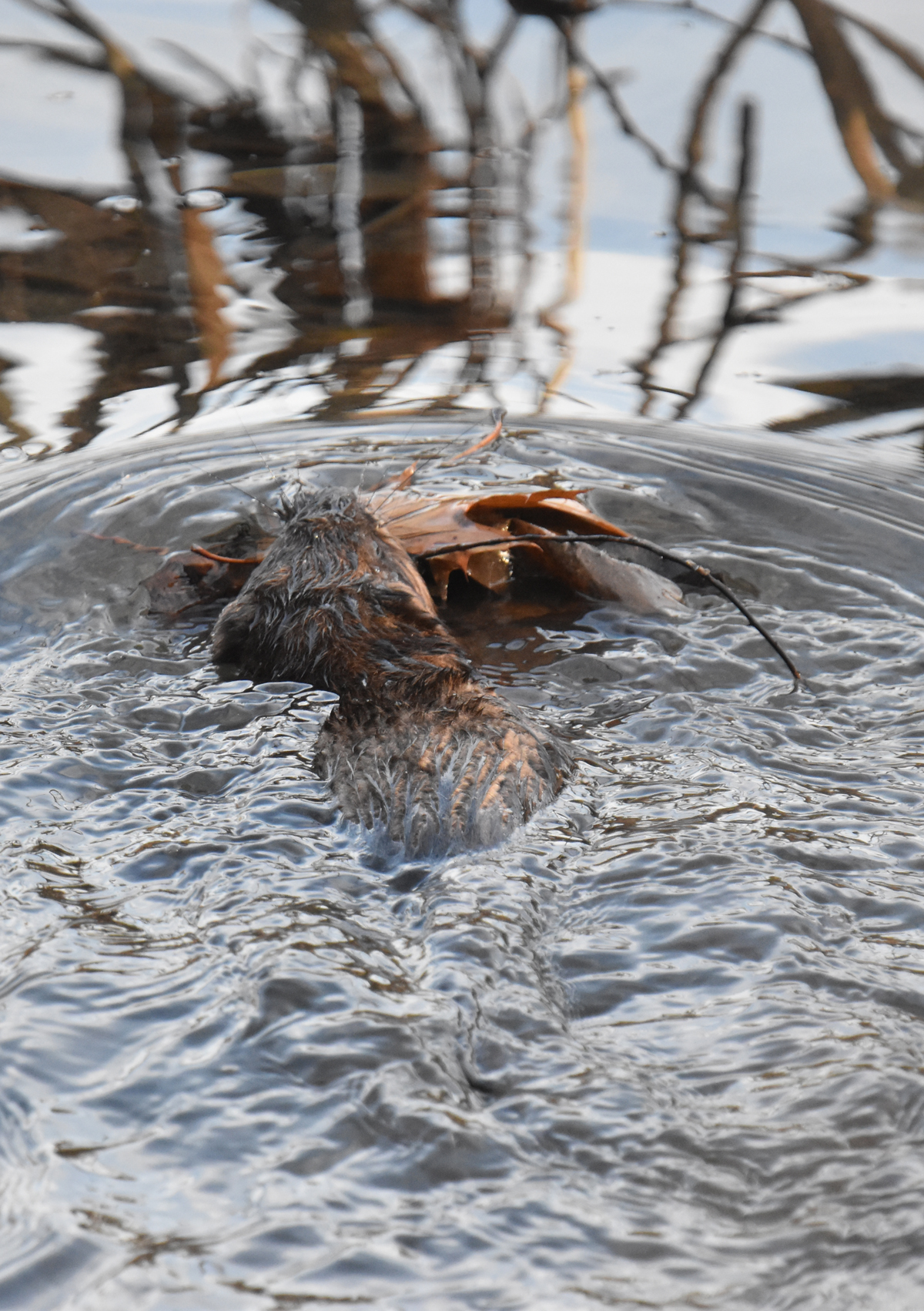
I’m not quite sure but it’s possible that the Rattray Muskrats were trying to build a lodge at the edge of the creek where the tangled branches had already started the job for them. They certainly seemed to be repeatedly carrying piles of mud and leaves towards the tangle

The Perils of Muskrat Home Building
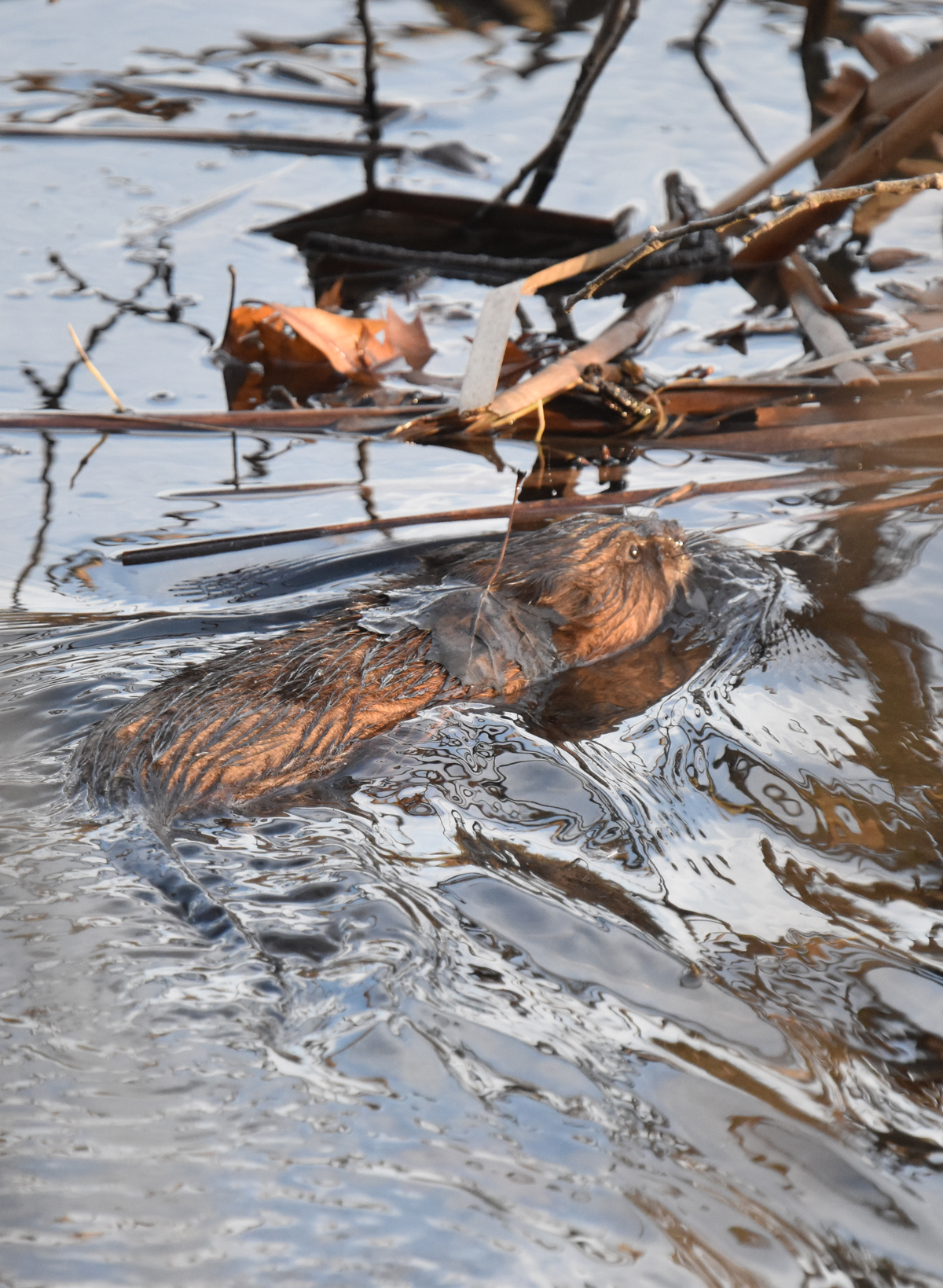
I noticed on a January visit to the Rattray that water levels in Sheridan Creek have risen. The fallen tree across the creek is mostly underwater. If the Muskrats did build a lodge in the tangled branches, I think it’s submerged now. Still, there may be something there to give them shelter. I hope their work wasn’t wasted.
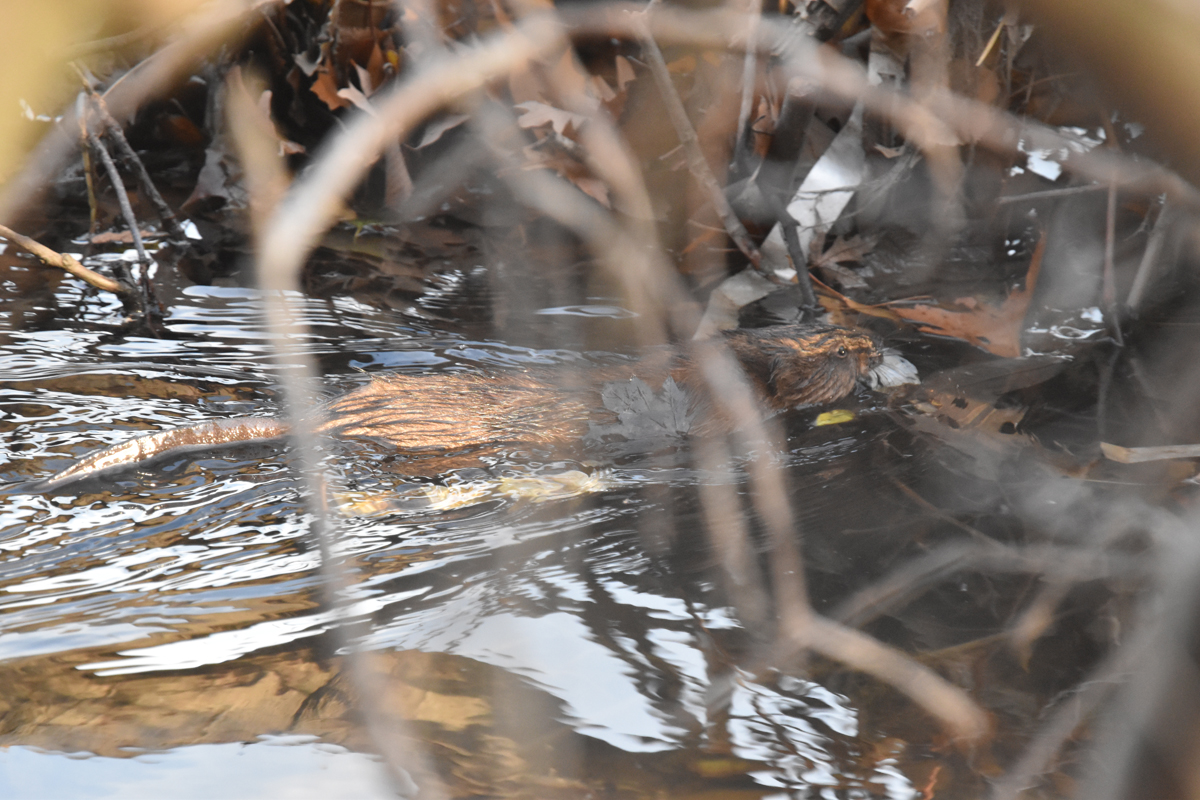
Related Reading
- The Denali Education Center, Alaska: Muskrats
- Muskrats Munching In the Rattray Marsh near Toronto
- Three Furry Brown Heads Swimming By in Southern Ontario
Join In
Do Muskrats live in a marsh near you? Have they built their winter push-ups yet? Please share your experiences with a comment.
